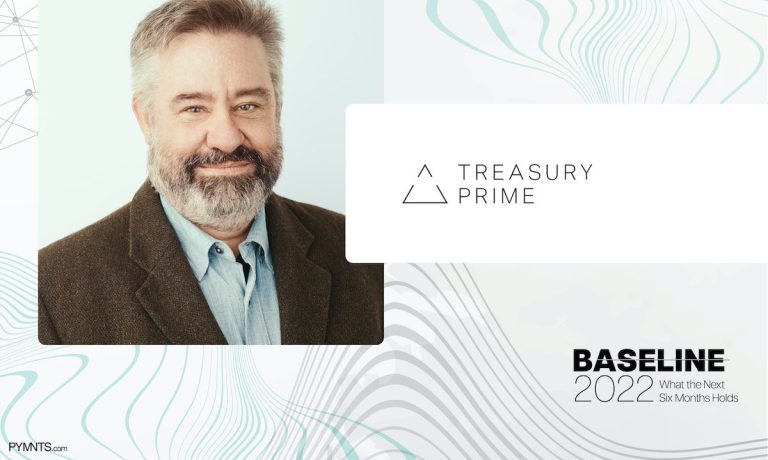
Venture firms are predicting that FinTechs will be generating an additional trillion dollars of deposits over the next few years, a fact that traditional banks ignore at their peril, writes Treasury Prime Co-founder and CEO Chris Dean in the PYMNTS eBook “Baseline 2022: What the Next Six Months Holds.”
It seems clear as economic turmoil and macro effects happen that the volume of payments will likely decrease in the near term. However, payment innovation is still a real thing, and nothing is going to stop the momentum that is already underway.
Most of our FinTech clients use electronic payments as a revenue center — when I say FinTech I’m talking about any company that moves money on their business platform, including embedded finance companies — so if anything, they’re doubling down on this channel because they realize that as times get hard, they want to invest in their most efficient and profitable products.
Banks are also shifting their focus to electronic payments. The number of physical branches will continue to decrease, while the volume of what they do electronically will increase.
If you look at the bigger picture, venture firms predict that FinTechs will be generating an additional trillion dollars of deposits in the next few years — that’s an astounding number. That’s 5% of total deposits in the U.S., and this is just the beginning. This is becoming a big enough channel now that if banks ignore it, there would be big trouble for them.
What I think will happen over the next couple of years is that the number of bank branches will continue to decrease, while the volume of transactions that they do electronically will increase. The channel is going to change substantially, because it’s so much more efficient to handle payments electronically than standing up a new building, and it leads to more profits.
As for other trendlines we’re watching: The “aha” moment for me and my co-founder Jim Brusstar was when we foresaw that open banking and FinTechs would start to take over more and more of the daily banking transactions in the U.S. We created a common protocol at Treasury Prime that connected a network of banks to FinTechs. It took us three and a half years of hard work to set up the network, helping FinTechs to work with banks to open bank accounts and issue debit cards, make payments and accrue deposits. Now, our network effect is thriving, and what we’re looking at is the credit side of the business, which is just as interesting as the deposit side.
We’ve helped banks acquire great deposits very cheaply, reducing the cost down to just a few dollars as opposed to thousands. But the credit side can be exactly the same because they have these deposits now that they can lend out. That’s how banking works; people still need loans, and we foresee high growth on the lending side too. And because we have an existing network, making these loan products is much easier than it would have been five or 10 years ago. I foresee a lot of innovation in this sector in the next year.